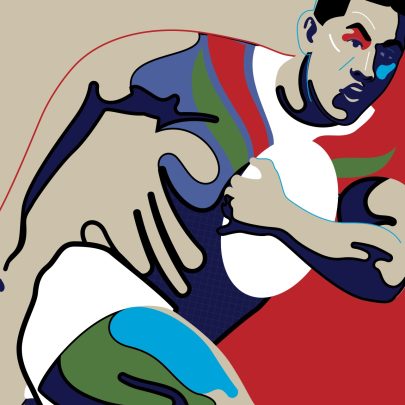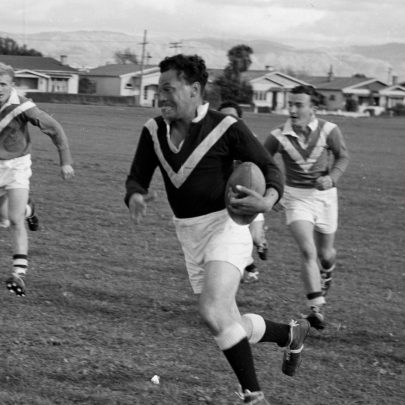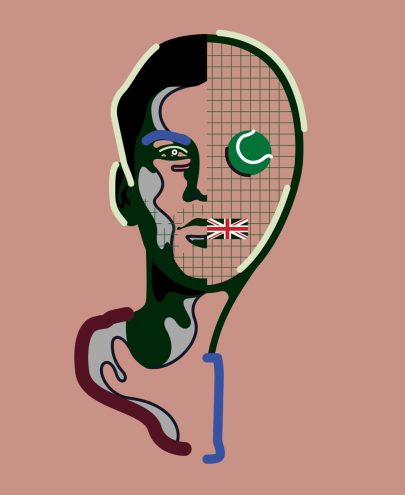Jan 13, 2015 Sport
Black Caps vs India: the 3rd one-day international. It was Auckland at its best, but not in every way.
First published in Metro, December 2014.
Were you there? Eden Park, January 25, the stadium packed to bursting. What a day. Sunshine, party-time, orange T-shirt and dreams-of-a-hundred-thousand-dollar-catch time; so many runs, so much fun and so much exhausting, agonising tension. The Black Caps, with Martin Guptill confounding his way to a century, put on 314. Then the Indians came out and early wickets tumbled — even the great Virat Kohli went cheaply — but the majestic M.S. Dhoni wasn’t settling for that, and the game started to turn, and turn, and in the last few overs it was right down to who had the finest steel in their backbone.
It was the best of Auckland. No one in this city knows how to party better than the Indians, which made Eden Park that day home to a festival of enormous fun, in celebration of incredible skill, embraced across ethnicities and incomes and ages. And it ended on a tie!
Of course, everyone on both sides wanted their own team to win. But when you looked around at the beaming faces afterwards, something else was plain: the thrill of the chase — the thrill of being all mixed up together in the chase — was reward enough. We all won that day.
Sports extravaganzas, like food festivals, are the easy wins of multiculturalism — and we struggle even to get them right.
And yet it was the worst of Auckland. The trains weren’t co-ordinated with the crowds the way they are with the rugby, so the transport plan was a mess. How is that still allowed to happen?
Worse, far worse, I thought, was the music. In one-day cricket, they play bursts of popular music between every over. At Eden Park that day, despite the stadium being roughly 70 per cent filled with partying Indian Aucklanders, the people who ran the music had such a miserable sense of the occasion they played an Indian pop song precisely once, a few overs from the end.
One song, in a hundred.
It probably didn’t make anyone miserable. It didn’t ruin lives. But it sure felt symbolically weighted. We might love the vibrant diversity of what this city is becoming, but sports extravaganzas, like food festivals, are the easy wins of multiculturalism — and we struggle even to get them right. We don’t yet know that the best way to make the most of this changing city is to change the way we do things.
It was the worst of Auckland, also, because it was Eden Park. That cockeyed patched-together mockery of a great stadium, the venue that does the job but will never be admired, much less loved. And why? Because it was redeveloped for the rugby back in the days when we did not believe in ourselves. When our civic leaders and national politicians largely lacked the imagination to know we deserved better, and those few who did know how to dream lacked the political skills to win public support.
It was less than 10 years ago. How Auckland has changed. We believe in ourselves now; we share a conviction that we can, and are, transforming the city. You hear people saying it everywhere, and you see the evidence everywhere too, on the streets, in businesses, in schools, in cafes and restaurants.
And yet, next year, that belief will be put to the test. The council does not have enough money for the things it wants to do, if it wants to pay for them in the ways it has become accustomed. The government and the council do not see eye to eye on big issues that shape the city — especially in housing and transport. Despite the enormous political battles that were fought over the Unitary Plan in 2013, density remains a dirty word among many and nimbyism is as strong as ever.
Auckland cannot become like Eden Park: functional but unloved because “that’s all we can afford”.
Auckland needs creative and affordable solutions. But doing things more cheaply doesn’t have to mean doing them badly. At the council, however, spending bears a curious relationship to outcome. On average, its “shared space” streets (think Elliott St), while admirably focused on improving streetlife and the viability of shops, cost five times as much as the entire redeveloped City Works Depot precinct on Wellesley and Nelson Sts.
There are bigger issues, too. When the Minister of Finance (and now also Minister of Housing), Bill English, said this year that affordable housing in Auckland might have to “get a little ugly”, he revealed he is ill-equipped for his role in helping us to create a better city.
When Mayor Len Brown supported (and only later opposed) a plan to put a new motorway through Mangere, he exposed his own clod-headed thinking. It’s hard not to conclude, with the mayor having been almost invisible for most of the year, that failure of will now governs his political life.
Auckland cannot become like Eden Park: half a stadium here, a bit of a tidy-up there, functional but unloved because “that’s all we can afford”. And Brown and English, who is now a key minister for this city, cannot be left to their own devices or they will make it so.
Building a vibrant, highly functional, creatively managed and inspirationally evolving city isn’t a “nice to have”. It’s the only option we have for economic viability — for jobs, and to create enough wealth to pay for developments that really will cost money.
Meanwhile, notwithstanding this little flush of scepticism, there are many things to applaud. One I especially like is the stylishly quirky Daldy St park, which will eventually link Victoria Park with the waterfront at North Wharf. Another is the beautiful Westhaven boardwalk, built in parts over the water, which is set to open before Christmas [ed. note: the Westhaven Promenade is now due to open in late January]. Both are products of the creative juices flowing freely at Waterfront Auckland.
You look at the loveliness and sense of fun those things generate and can only despair at the missed opportunities in and around Eden Park. Again, it’s not always about the money: good design isn’t a function of cost nearly as much as it is of inspiration and determination. The plan to apply the creative skills (and investment-sucking skills) of Waterfront Auckland to other parts of the city, especially suburbs like Avondale, cannot come fast enough.
We’re poised on the edge of something here. Urban planning, business growth, cultural excitement, transport opportunities, technological wizardry, affordable housing, the place of tangata whenua and the place of all the other cultures, everything about the way Auckland works and could work. They’re all up for grabs.
We’ll get to the good place — a reinvented city that we love and that the world wants to live in and work in — only if we embrace change. In the best of Auckland, celebrated over these pages, you’ll find that theme again and again: people who said, let’s do it differently. Let’s rethink our possibilities. Let’s go with the Indian music.
Click here for more on the best – and worst – of Auckland in 2014





